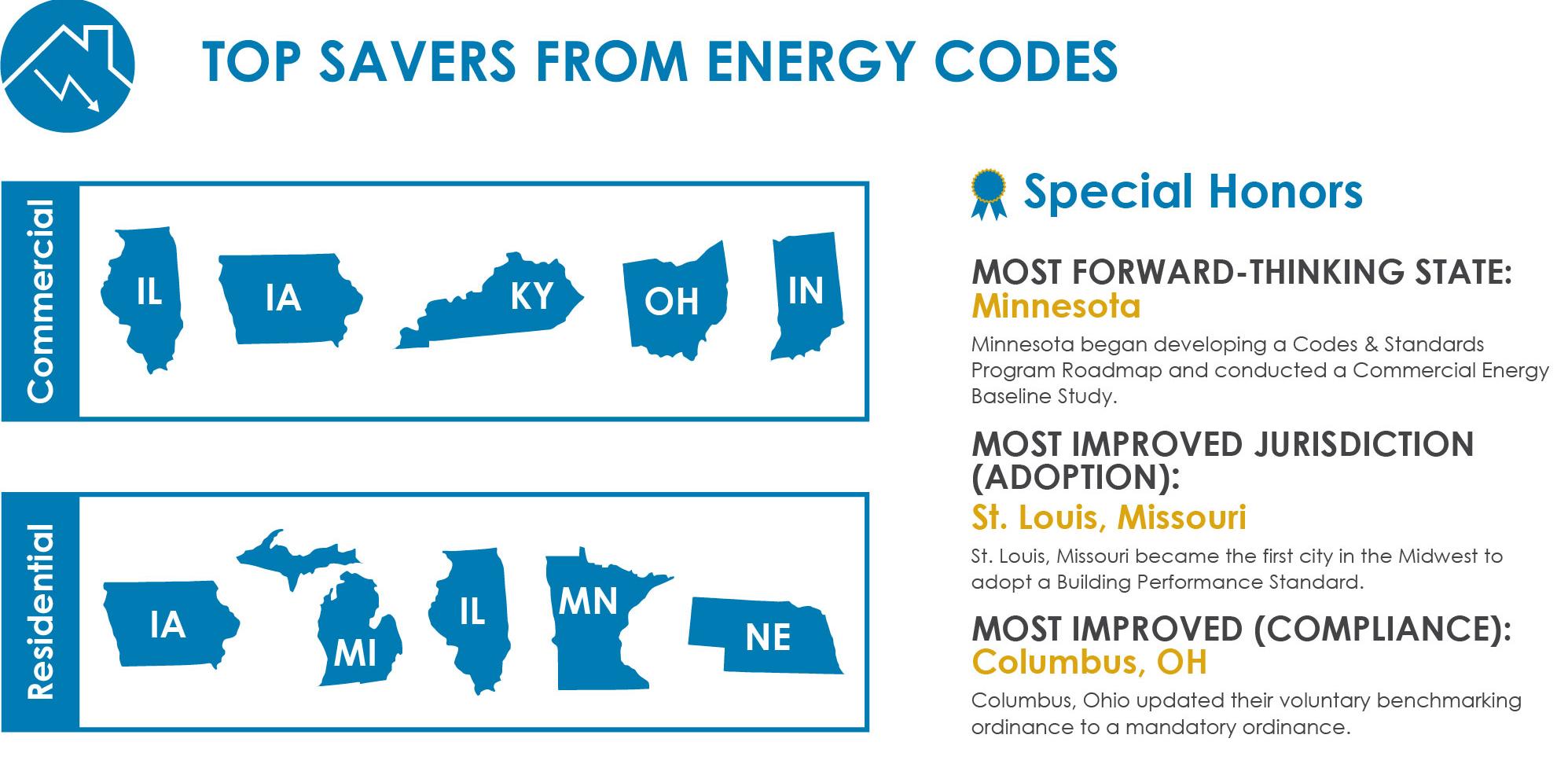
Regular adoption of building codes and improved compliance with existing codes is critical to ensuring new commercial and residential buildings are energy efficient.
Minnesota’s Department of Commerce began developing a Codes & Standards (C&S) Program Roadmap, in partnership with 2050 Partners, Slipstream, MEEA and LHB. This project establishes a foundation for robust programs to deliver cost-effective energy savings that can be claimed toward utility savings and carbon reduction goals. Minnesota also conducted a Commercial Energy Baseline Study which sought to identify the future energy savings opportunities for commercial buildings.
St. Louis, Missouri became the first city in the Midwest, and only the fourth jurisdiction in the country, to adopt a Building Performance Standard, which builds on the existing benchmarking ordinance passed in 2017. By passing the standard, St. Louis is taking a major step toward significant carbon reductions and energy efficiency improvements in its existing building stock.
Columbus, Ohio updated its voluntary benchmarking ordinance to a mandatory ordinance, which requires building owners to report building size, energy usage and utility bill data beginning in June 2021. If it follows the pattern of similar mandatory ordinances, this ordinance will result in a 3-4% reduction of annual carbon emissions.